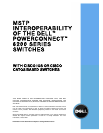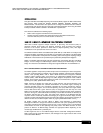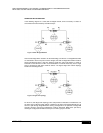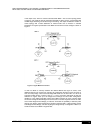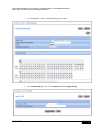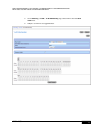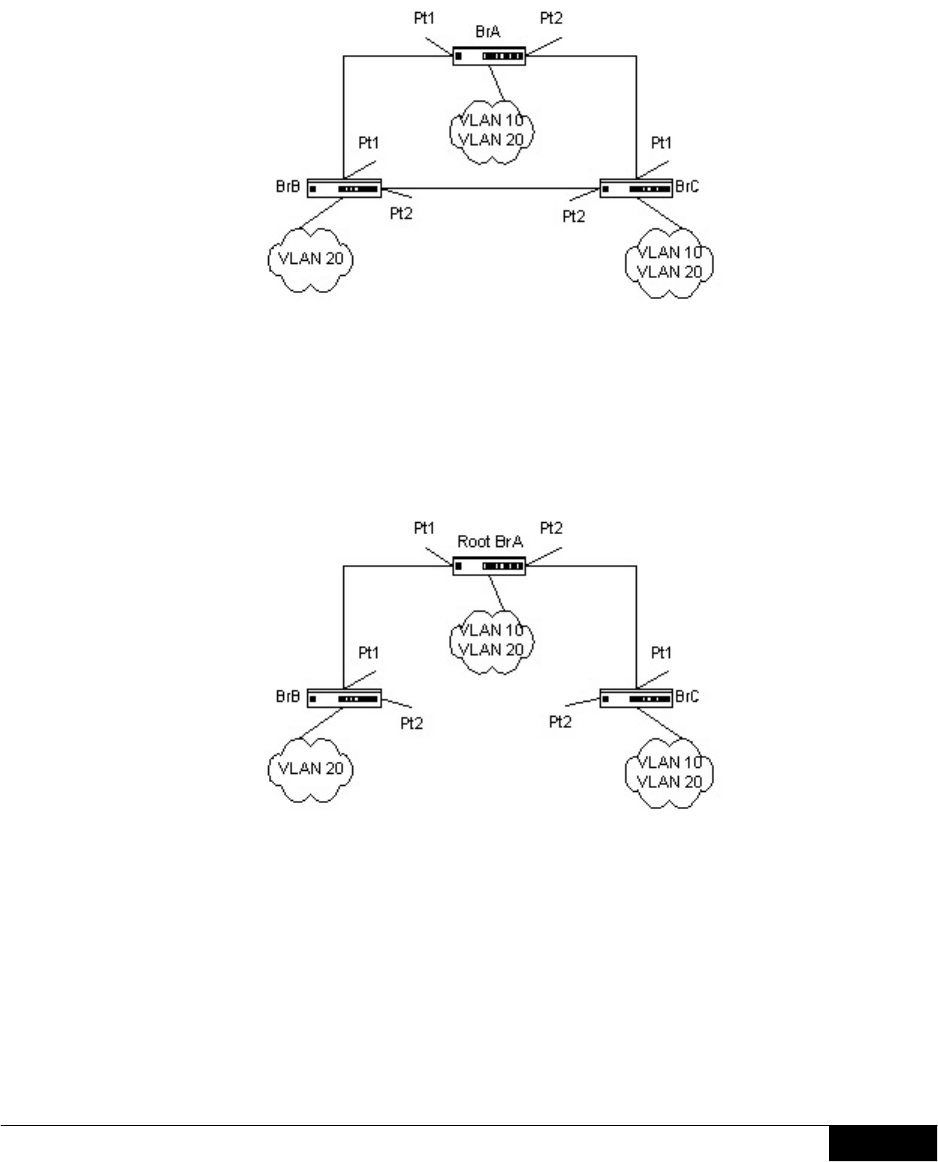
7
APRIL 2008
MSTP INTEROPERABILITY OF THE DELL™ POWERCONNECT™ 6200 SERIES SWITCHES
WITH CISCO IOS AND CISCO CATOS-BASED SWITCHES
OPERATION IN THE NETWORK
In the following diagram of a small, 802.1d bridged network, STP is necessary to create an
environment with full connectivity and without loops:
Figure 4: Small Bridged Network
Assume that bridge BrA is elected to be the Root Bridge, and Port Pt1 on bridge BrB and BrC
are calculated to be the root ports for those bridges, Port Pt2 on bridge BrB and BrC would be
placed into Blocking State. A loop-free topology would then exist. End stations in VLAN 10
could talk to other devices in VLAN 10 and end stations in VLAN 20 would only have a single
path to communicate with other VLAN 20 devices. The logical single STP network topology
would look something like this:
Figure 5: Single STP Topology
For VLAN 10, this Single STP Topology is fine and presents no limitations or inefficiencies. On
the other hand, VLAN 20’s traffic pattern is inefficient. All frames from bridge BrB will have to
traverse a path through bridge BrA before arriving at bridge BrC. If the ports Pt2 on bridge BrB
and BrC could be used, these inefficiencies could be eliminated. MSTP does just that by
allowing the configuration of MSTIs based upon a VLAN or groups of VLANs.



